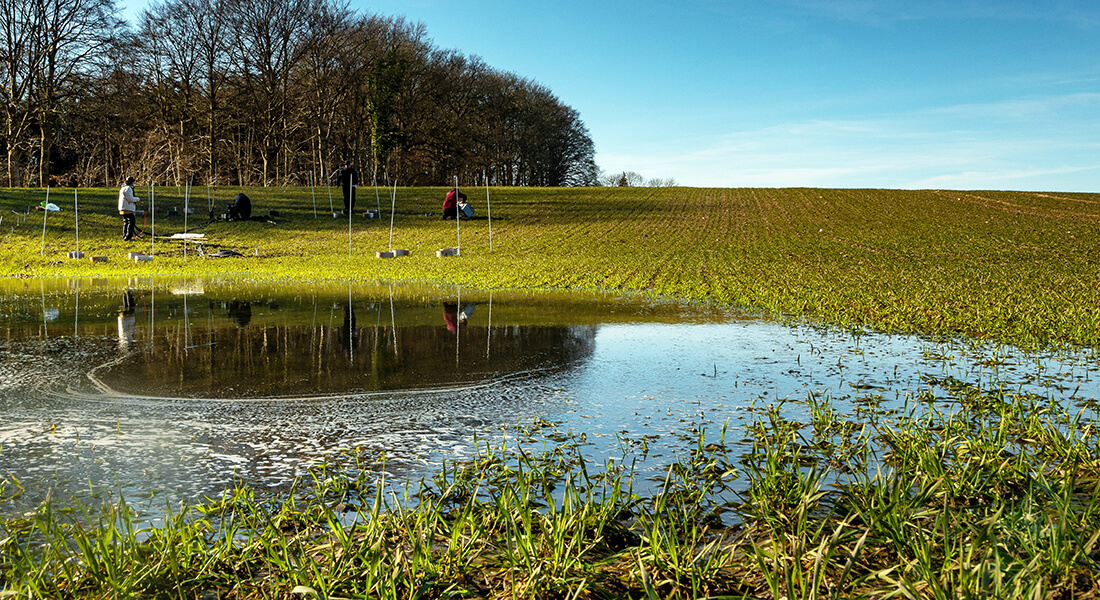Laughing gas from Danish croplands – underrepresented hot spots
To manage future N2O emissions on agricultural fields effectively, we need to better understand the contribution of emission hot spots.

This study aims to describe and quantify the extent of nitrous oxide gas (N2O) emissions from hotspots within agricultural fields. This is a knowledge gap in our national greenhouse gas budgets that is urgently needed to account for.
Across the globe, several agricultural countries are facing the same urgent question: which part and how much of farmland should be taken out of production to most efficiently reduce greenhouse gas emissions. Here we will quantify how important hotspots in terms of poorly drained depressions within agricultural fields are for N2O emissions and provide future strategies to reduce N2O emissions and optimized land use practice. Consequently, a new strategy is expected to be a win-win situation for farmers, nature and the society.
In the project we take a closer look at laughing gas emissions, ranging from small scale phenomena at root-soil interface to the field scale.”
We try to elucidate what the best management options are to reduce the N2O emissions from hot spots in the Danish countryside.”
Contact

Associate Prof. Carsten W. Mueller
cm@ign.ku.dk
+45 35 33 41 25
Participants in the project:
Yujia Liu, PhD student, yliu@ign.ku.dk
Kristian Thorup-Kristensen, co-PI, Prof. PLEN, ktk@plen.ku.dk
Per Lennart Ambus, co-PI, Prof. IGN,
Bo Elberling, co-PI, Prof. IGN
The project is funded by

Project period: 2021 til 2026
